USTB is committed to building itself into a high-level research-oriented university
which attaches importance to novel scientific research and promotes independent innovation.
Recently, Professor Xiangyuan Wan’s research group at the School of Biology and Agriculture, University of Science and Technology Beijing, achieved a series of major advances in understanding the molecular mechanisms governing maize fertility and antiviral resistance. These findings were published in Science Bulletin, Nature Communications, and Journal of Advanced Research, three internationally renowned TOP1 journals.
The series of studies focused on regulatory pathways controlling maize male fertility and disease resistance, offering valuable theoretical and technical guidance for molecular breeding in maize.
1. Regulatory Loop Ensures Pollen Development
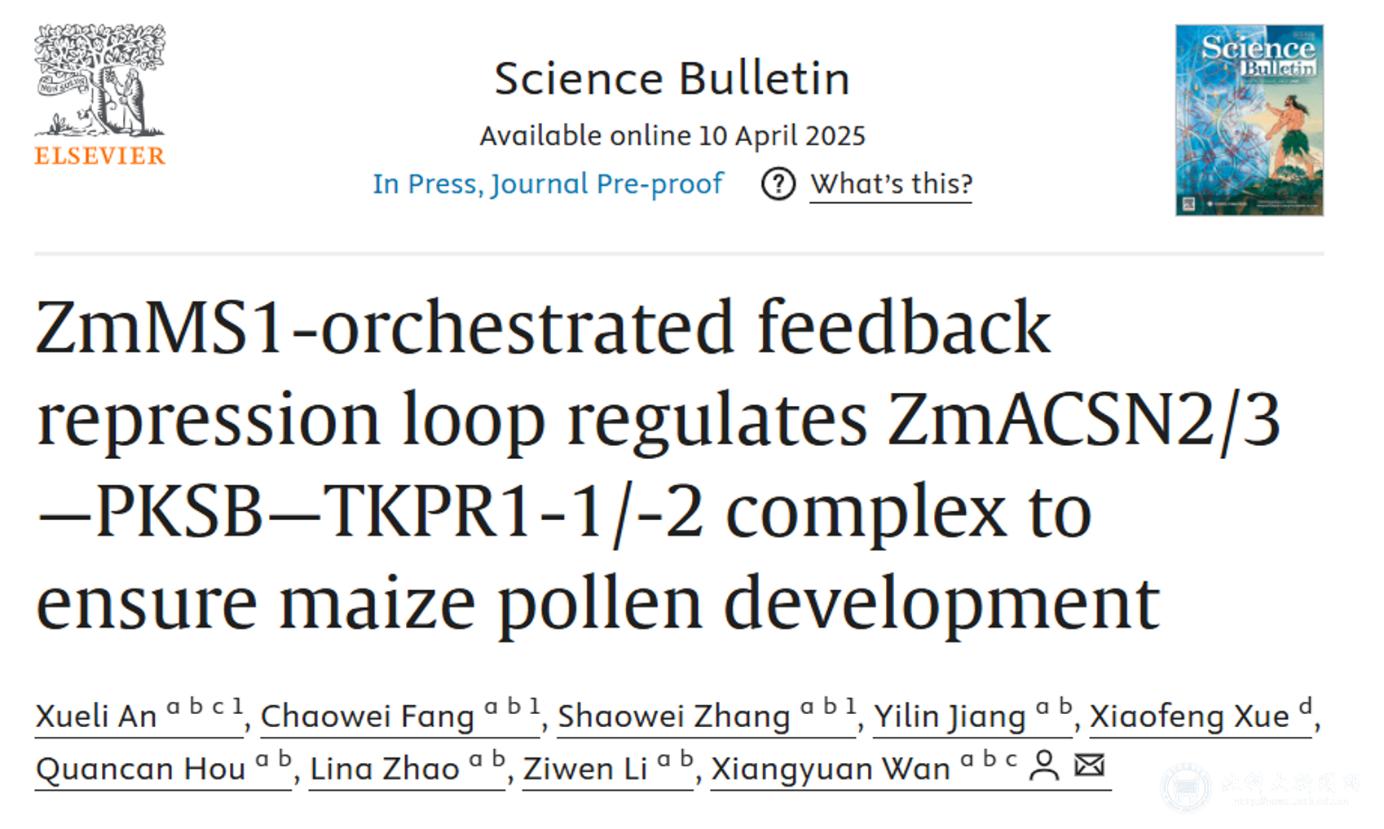
Published in Science Bulletin
-The team discovered that ZmMS1, a key regulator of pollen wall development, orchestrates a feedback repression loop that controls the activity of ZmACSN2/3–PKSB–TKPR1-1/-2 complexes.
-This loop regulates the biosynthesis of sporopollenin precursors, ensuring structural integrity and protective function of the pollen exine.
-The discovery provides new insights into the complex molecular feedback systems underlying pollen wall formation and fertility.
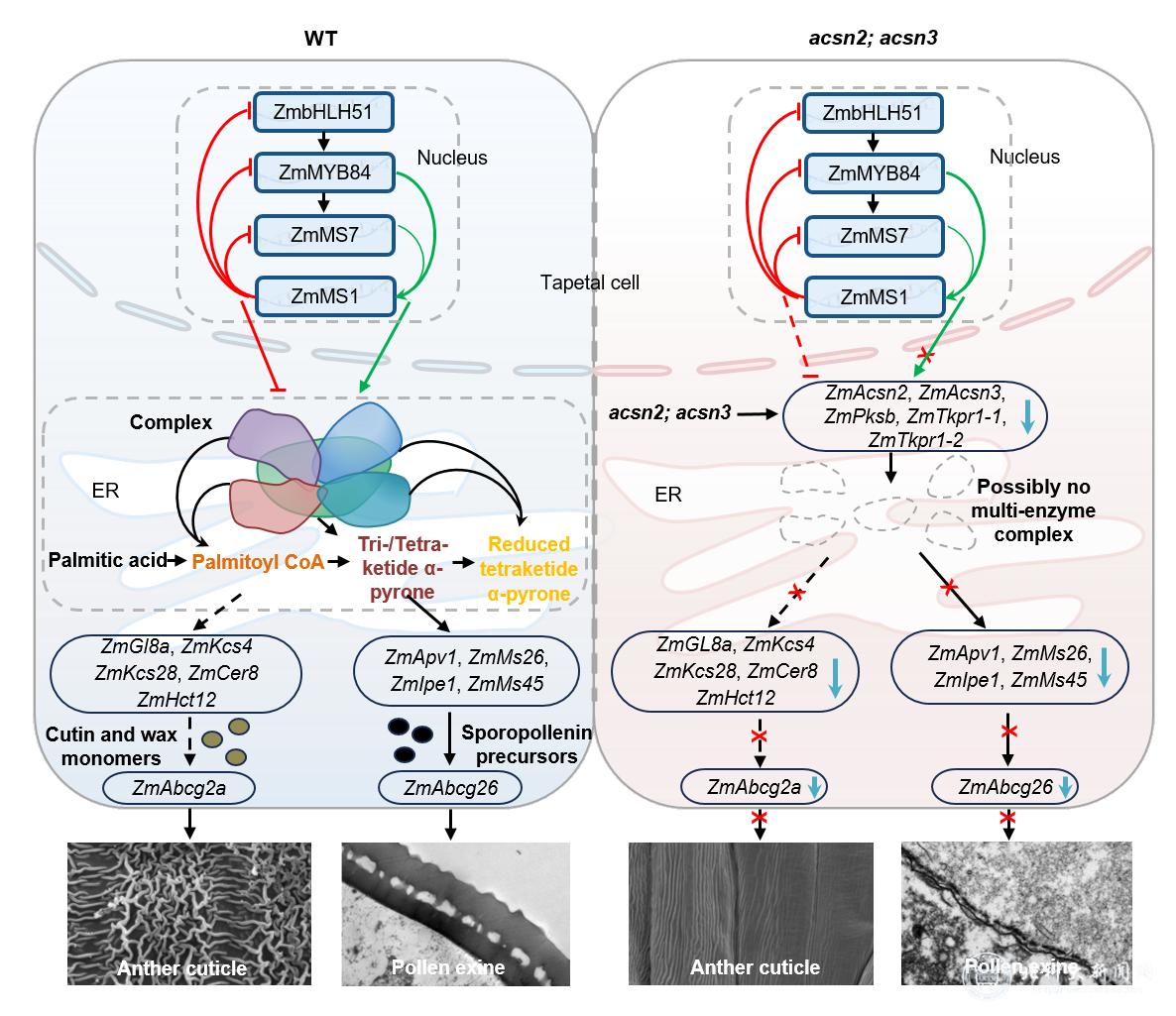 A working model of the ZmMS1 feedback inhibition loop precisely regulating the ZmACSN2/3-ZmPKSB-ZmTKPR1-1/-2 protein complex to control anther and pollen development in maize.
A working model of the ZmMS1 feedback inhibition loop precisely regulating the ZmACSN2/3-ZmPKSB-ZmTKPR1-1/-2 protein complex to control anther and pollen development in maize.
2. Lipid–ROS Pathway Supports Pollen and Anther Growth
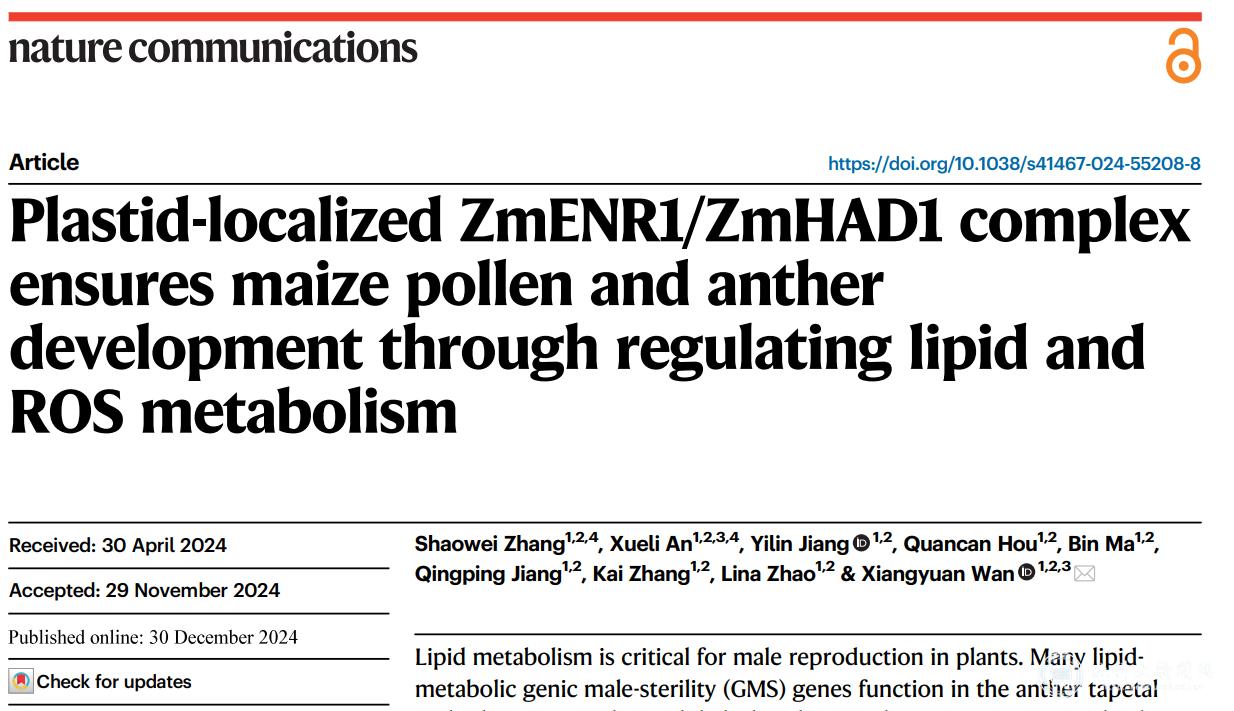
Published in Nature Communications
-Researchers identified a plastid-localized ZmENR1/ZmHAD1 complex that plays a central role in regulating lipid metabolism and reactive oxygen species (ROS) balance during pollen and anther development.
-Loss of function mutations disrupted cuticle and exine formation, leading to male sterility.
-This study highlights how metabolic control at the plastid level is critical for maintaining fertility and preventing oxidative stress in reproductive tissues.
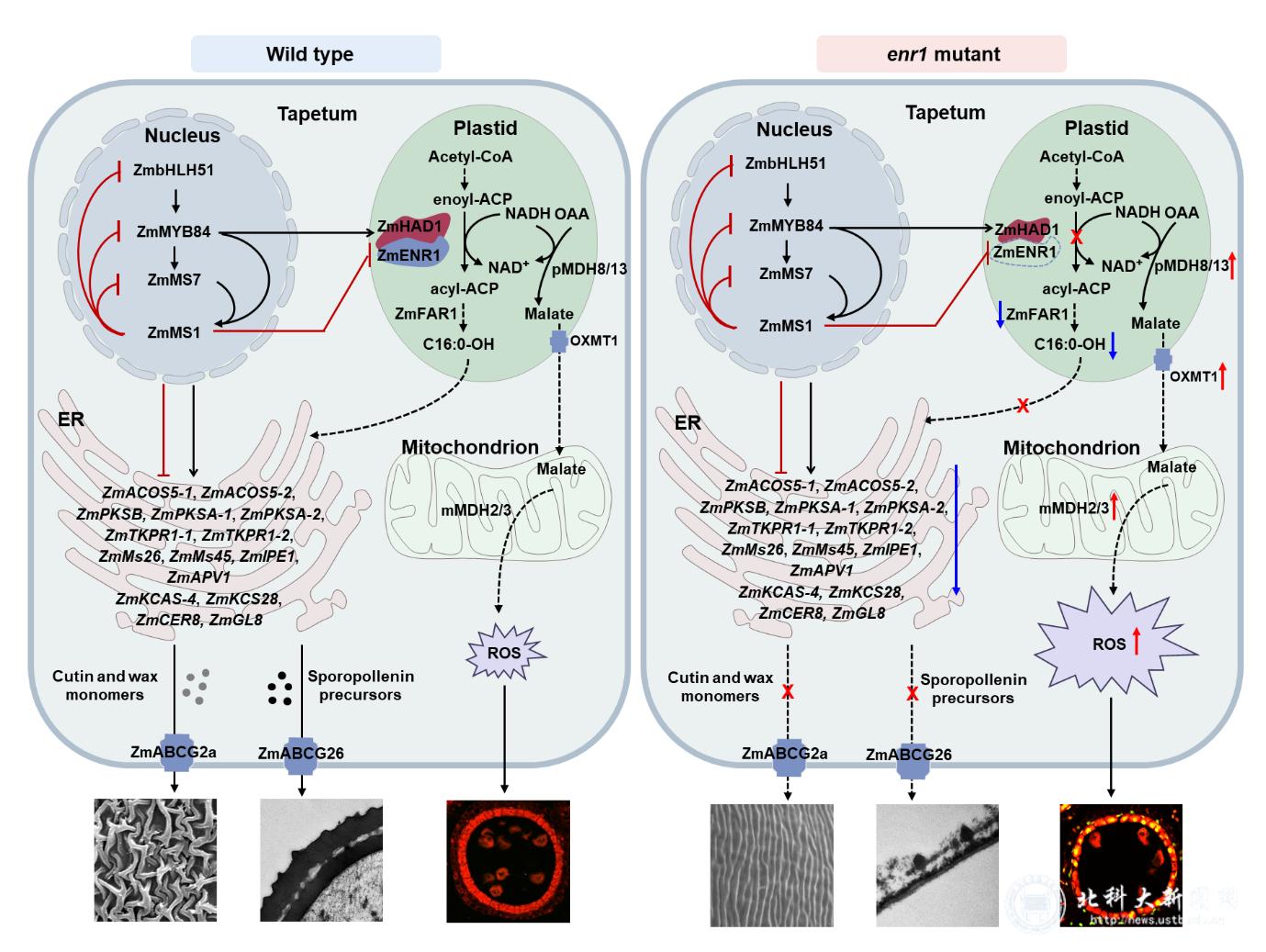 The molecular mechanism of ZmMS1 feedback inhibition loop regulating ZmENR1/ZmHAD1 complex to control pollen development
The molecular mechanism of ZmMS1 feedback inhibition loop regulating ZmENR1/ZmHAD1 complex to control pollen development
3. Balancing Resistance and Yield in Maize Breeding
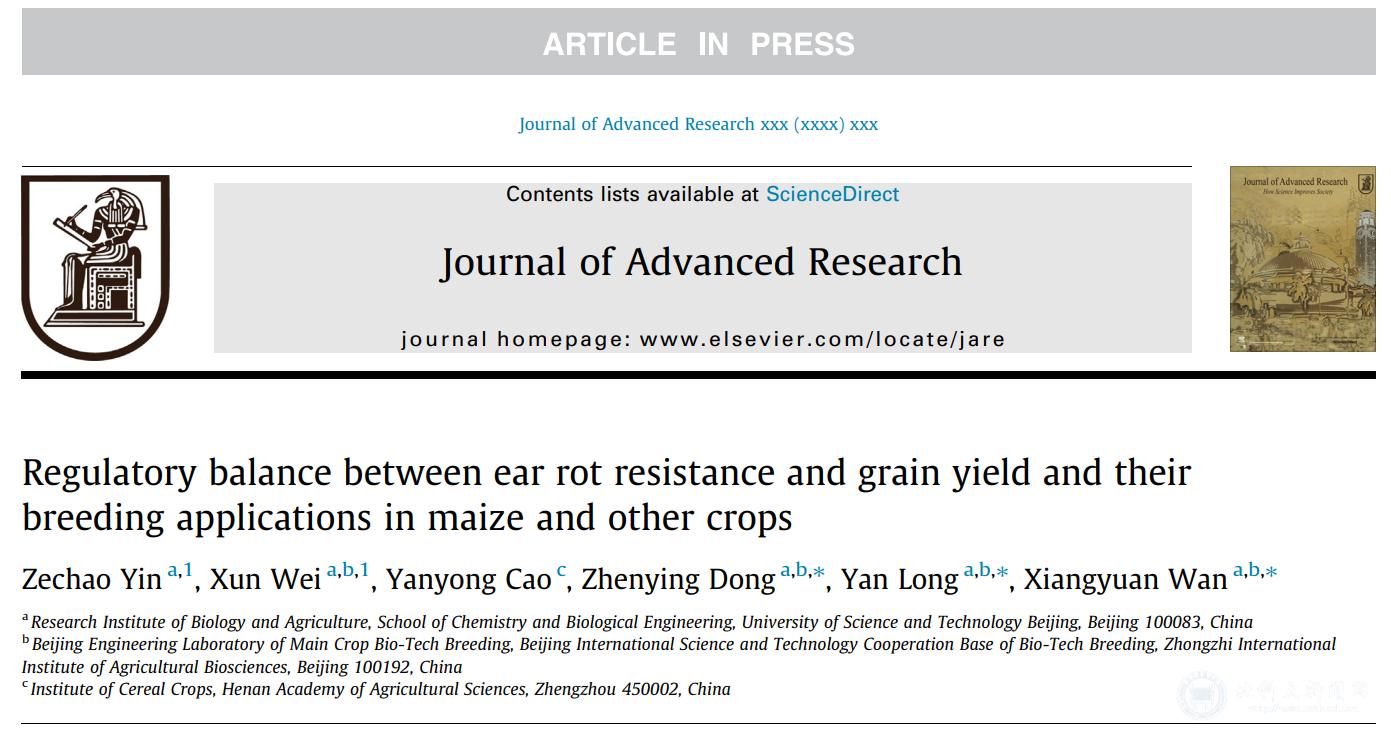
Published in Journal of Advanced Research
-The group explored the genetic trade-off between ear rot (ER) resistance and grain yield.
-Using multi-omics approaches, they mapped resistance-related loci and identified genes balancing immunity and productivity.
-Their findings shed light on strategies to breed maize varieties that are both high-yielding and disease-resistant, addressing a longstanding global agricultural challenge.
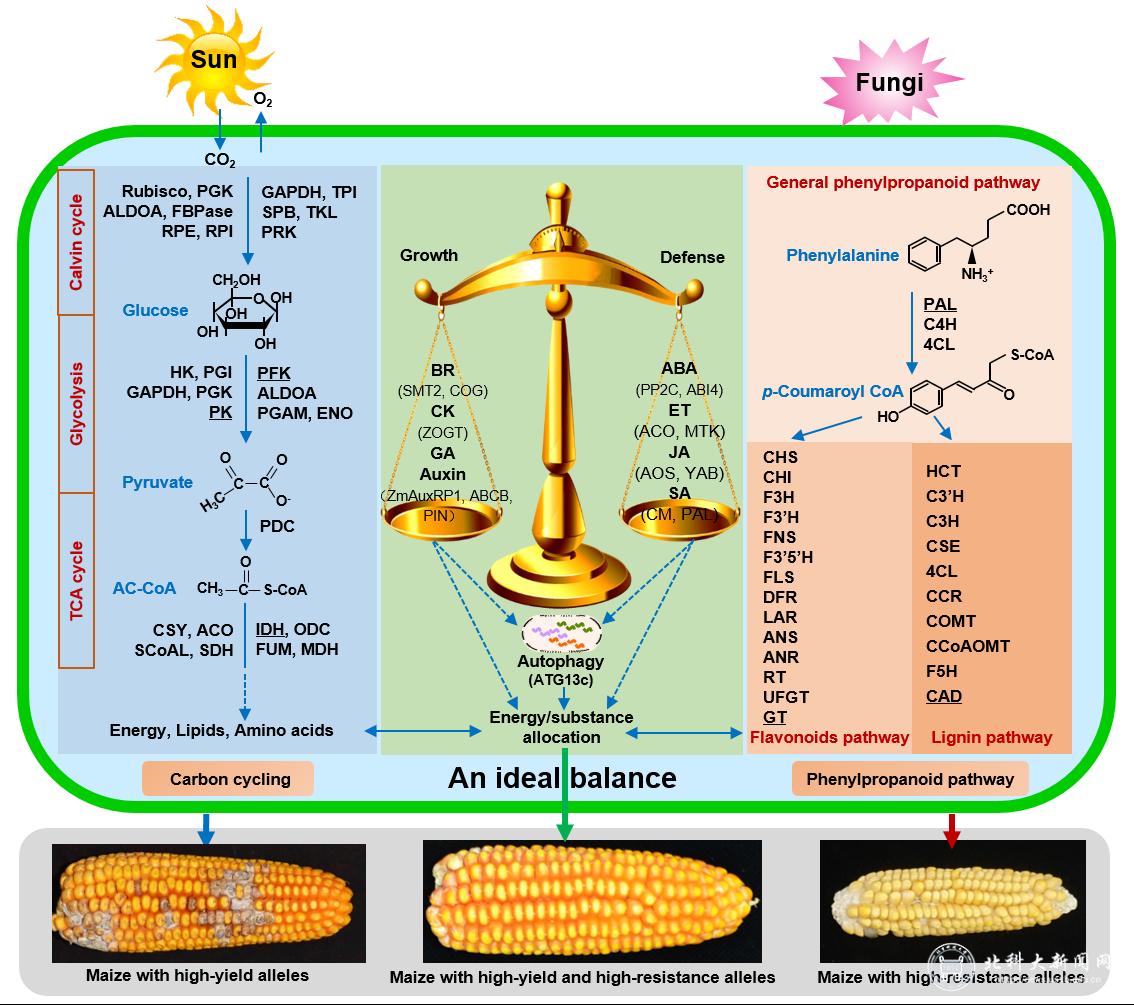 The breeding application of regulatory mechanisms and related gene resources for optimizing maize resistance and increasing yield.
The breeding application of regulatory mechanisms and related gene resources for optimizing maize resistance and increasing yield.
Significance
Together, these studies:
-Uncover novel molecular feedback loops that safeguard pollen wall formation.
-Demonstrate how lipid and ROS metabolism underpin reproductive success.
-Provide genomic targets for balancing resistance with productivity in crop breeding.
These breakthroughs mark an important step toward molecularly guided maize improvement, strengthening global efforts in food security and sustainable agriculture.